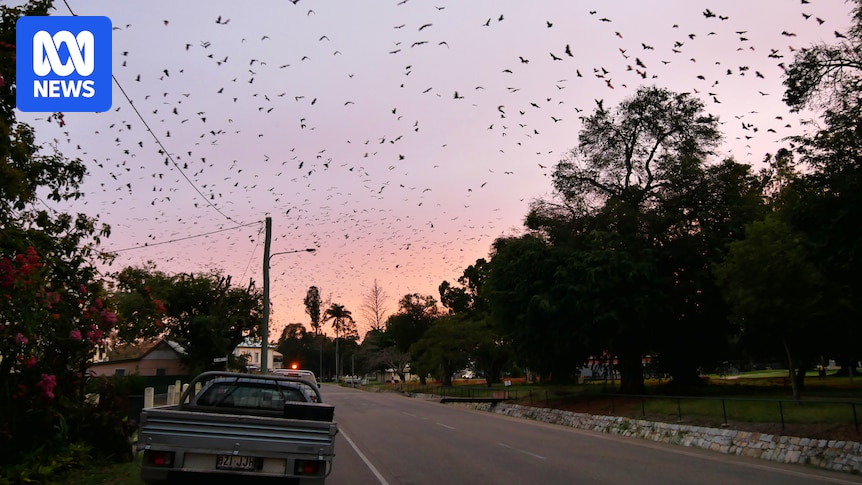
A health warning has been issued for parts of North Queensland following a surge in incidents where individuals have been bitten or scratched by flying foxes. Authorities are urging the public to maintain a safe distance from these bats, as encounters have notably increased.
Since the beginning of the year, 17 people have reported contact with bats in the Townsville health district, with an additional 20 cases in the Mackay region. The Townsville Public Health Unit has observed a gradual rise in these numbers over recent years. Despite this increase, the health service has not detected a recent spike in cases of the fatal Australian bat lyssavirus (ABLV).
Understanding the Risks of ABLV
Acting director Dr. Kate Murton highlighted the dangers associated with flying foxes, noting their potential to carry ABLV, a highly lethal virus. “ABLV is one of the most lethal viruses we know of — it can cause paralysis, delirium, convulsions, and ultimately death,” she stated.
Dr. Murton emphasized the importance of seeking emergency treatment if bitten or scratched by a bat. “We have to treat every bat exposure as if they have the virus,” she added. Since 1996, four people have died from the virus across Australia, with the most recent fatality occurring in New South Wales this year.
Bat Breeding Season and Human Interaction
Dr. Murton explained that the current increase in encounters is partly due to the bat breeding season, which sees more animals becoming entangled in fences or barbed wire. “People are attempting to help the distressed animal, which is when they get bitten or scratched,” she explained. Recent cases have shown that flying foxes can scratch through clothing and bite through gloves, making it imperative for the public to avoid direct contact.
Authorities are advising anyone who has been bitten or scratched to immediately wash the wounds with soap and water, apply an antiseptic solution, and seek post-exposure treatment at an emergency department.
Ecological Insights and Challenges
James Cook University adjunct associate professor Noel Preece provided insight into the bat species prevalent in North Queensland, identifying the little red, spectacled, and black flying foxes. “The reds are hard to predict but they do follow the flowering of eucalypts and melaleuca in particular,” he said, noting their tendency to move in large numbers across the country.
Preece explained that colonies are often challenging to relocate. “Instead of having a colony that might be 500 or a thousand or something — by disturbing them, they can break up into a hundred or 50,” he noted.
Community Impact and Response
In Charters Towers, black flying foxes are considered residents, with a colony successfully moved to a site near the town’s sewage treatment plant using dispersal techniques. However, Mayor Liz Schmidt reported that the council is now contending with migratory red flying foxes roosting at Lissner Park. “They come in, they land in the trees and they roost, then they have babies and we can’t touch them,” she said.
Schmidt acknowledged the challenges posed by dispersal techniques, which have included pyrotechnics and noise. “It’s an impost on our community; some people are vulnerable, some people with PTSD,” she remarked.
Both Dr. Murton and Mayor Schmidt have urged residents to avoid contact with flying foxes to prevent health risks. “Leave them alone, don’t touch them, don’t let them scratch you and you won’t be impacted negatively, health-wise,” Schmidt advised.
This development underscores the need for ongoing public education and awareness as communities navigate the complexities of living alongside these vital yet potentially dangerous animals.





